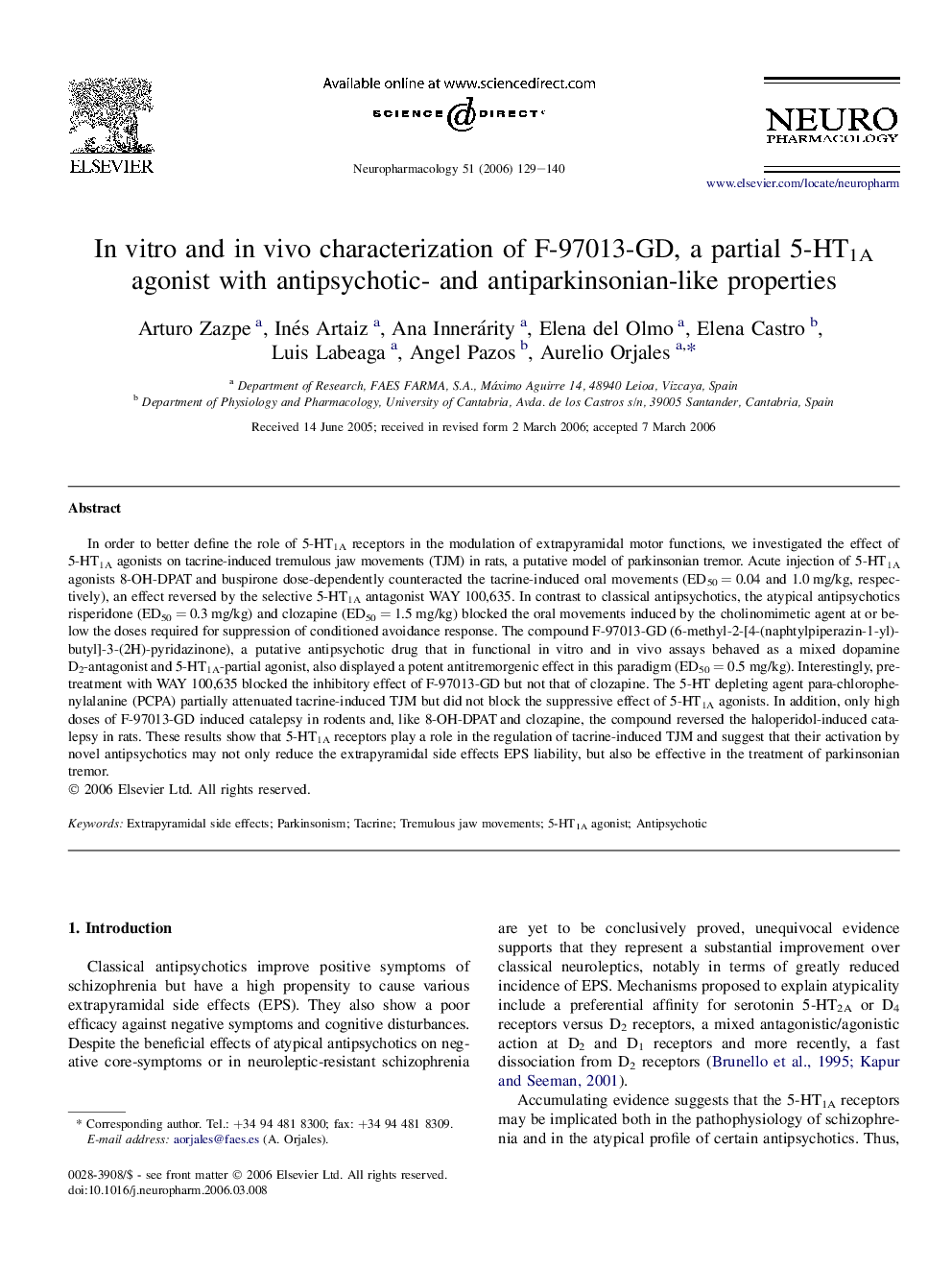| Article ID | Journal | Published Year | Pages | File Type |
|---|---|---|---|---|
| 2495391 | Neuropharmacology | 2006 | 12 Pages |
Abstract
In order to better define the role of 5-HT1A receptors in the modulation of extrapyramidal motor functions, we investigated the effect of 5-HT1A agonists on tacrine-induced tremulous jaw movements (TJM) in rats, a putative model of parkinsonian tremor. Acute injection of 5-HT1A agonists 8-OH-DPAT and buspirone dose-dependently counteracted the tacrine-induced oral movements (ED50Â =Â 0.04 and 1.0Â mg/kg, respectively), an effect reversed by the selective 5-HT1A antagonist WAY 100,635. In contrast to classical antipsychotics, the atypical antipsychotics risperidone (ED50Â =Â 0.3Â mg/kg) and clozapine (ED50Â =Â 1.5Â mg/kg) blocked the oral movements induced by the cholinomimetic agent at or below the doses required for suppression of conditioned avoidance response. The compound F-97013-GD (6-methyl-2-[4-(naphtylpiperazin-1-yl)butyl]-3-(2H)-pyridazinone), a putative antipsychotic drug that in functional in vitro and in vivo assays behaved as a mixed dopamine D2-antagonist and 5-HT1A-partial agonist, also displayed a potent antitremorgenic effect in this paradigm (ED50Â =Â 0.5Â mg/kg). Interestingly, pretreatment with WAY 100,635 blocked the inhibitory effect of F-97013-GD but not that of clozapine. The 5-HT depleting agent para-chlorophenylalanine (PCPA) partially attenuated tacrine-induced TJM but did not block the suppressive effect of 5-HT1A agonists. In addition, only high doses of F-97013-GD induced catalepsy in rodents and, like 8-OH-DPAT and clozapine, the compound reversed the haloperidol-induced catalepsy in rats. These results show that 5-HT1A receptors play a role in the regulation of tacrine-induced TJM and suggest that their activation by novel antipsychotics may not only reduce the extrapyramidal side effects EPS liability, but also be effective in the treatment of parkinsonian tremor.
Keywords
Related Topics
Life Sciences
Neuroscience
Behavioral Neuroscience
Authors
Arturo Zazpe, Inés Artaiz, Ana Innerárity, Elena del Olmo, Elena Castro, Luis Labeaga, Angel Pazos, Aurelio Orjales,
